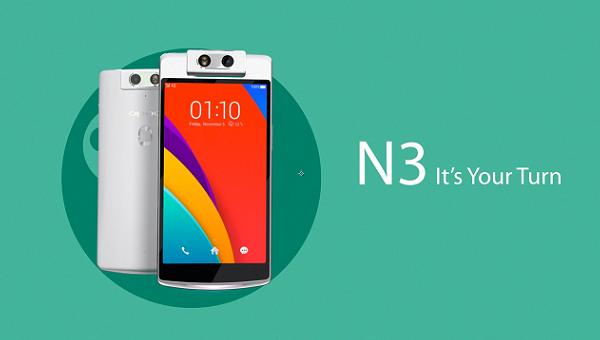Last Updated on July 20, 2022 by Mathew Diekhake
Rooting your Oppo N3 shouldn’t take more than a couple of minutes, if you already have a custom recovery running on your device. Once a recovery is up on your device, all you need to do is flash the SuperSU archive and you should be rooted.
Root is the name given to the user account on Android and Linux in general that holds the key to having the chance to run all commands and access all files. There are thousands of applications that take advantage of being able to run additional commands and use other files, and these are called the root apps because they could not run without the Android root access.

If you have a computer that runs on one of the seven main Linux distributions, you would be given the root user account when you first set up the computer. It works much the same way setting up a computer running on the Windows operating system would where you are given the admin account when you first set it up. The admin account and the root user account are the same things just worded differently for different operating system. It’s said that Linux chose to call it the root user account not just for the sake of being different but because it matched their operating system because having root access is also having access to the root directory that all Linux kernels have, and so does Android.
Files You Need
- You must have a custom recovery installed on your device before you can do the following tutorial. Please head to our how to install a custom recovery on the Oppo N3 tutorial to learn how you can install one on your device.
- This tutorial flashes SuperSU to achieve root-access on your device.
- Download SuperSU to your computer. Don’t extract it, leave it as is.
Rooting the Oppo N3
1. Connect your phone to your computer in data transfer mode using a USB cable.
2. Copy SuperSU .zip from your computer over to the internal SD card storage on your device.
3. When SuperSU is copied, disconnect your device from your computer.
4. Turn off your device.
5. Turn your device back on in recovery mode. To do that, hold down Volume DOWN and Power buttons simultaneously for a few seconds.
6. Your phone should reboot into recovery mode.
7. Once in recovery, select Install and choose SuperSU .zip to be installed on your device.
8. Confirm the flash prompt and wait for it to install SuperSU on your device.
9. When it’s done flashing, reboot your device.
10. You should now be rooted.
And there you go.
Your Oppo N3 is now fully rooted and the same can be confirmed using Root Checker on your device.
You now have all the freedom to enjoy whatever custom development you want on your device. The custom recovery gives your Oppo N3 device the chance to have a custom ROM or custom kernel installed. And the root access allows you to start thinking about what root applications you want to have installed—if any.
To avoid confusion, you don’t need to have the Oppo N3 rooted to start running a custom ROM or kernel. All you need to do is flash them from the custom recovery image the same way you just finished flashing the SuperSU. Most of the custom ROMs and kernels are posted on the XDA-Developers forum if that’s what you wanted to check out.
With that being said, there are root apps out there that help you install custom ROMs and help you find out what custom ROMs are available to install on your device. If you wanted to use one of those apps, then you need to have root access. One of the apps that match that description is the ROM Manager app that many people like to use.
Apart from that, though, having access to the root user account is just about what applications you can install. There are thousands of other applications called root apps that are waiting for you to install them on your device whenever you want to use them. You can check out our list that goes into great detail about many of the best root apps that can run on your Opp3 N3 smartphone to help enhance it and customize it, so you enjoy it better than the version of the Android operating system that is given to you now.
Moreover, we also have another article that goes into great detail about all of the things you can do with root access if you prefer checking out some ideas first.
